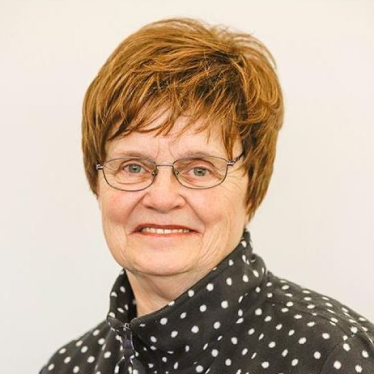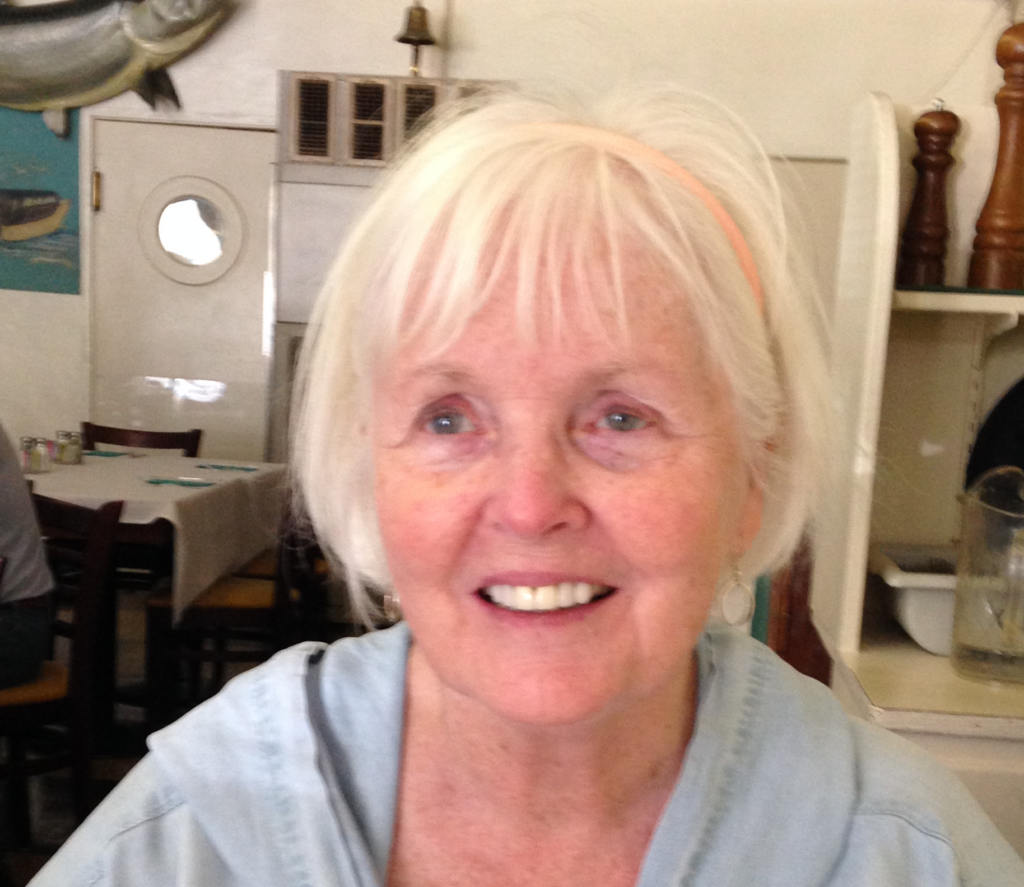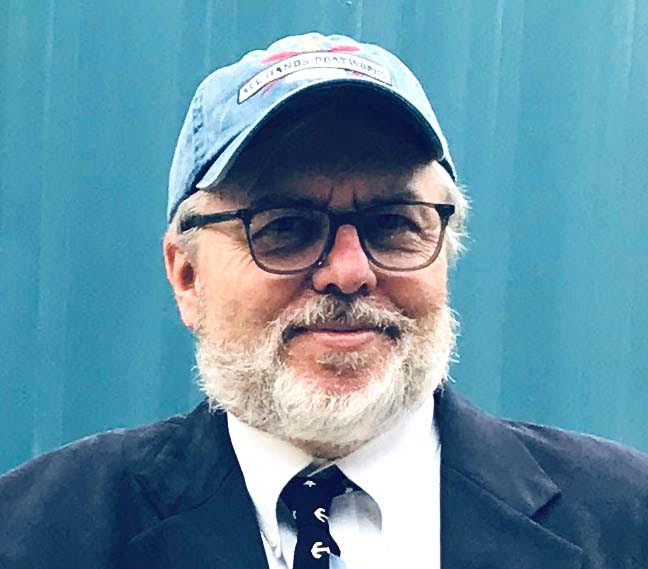About The Site
The origin of this website traces to a gift of an original 19th-century photograph of General George Meade I received in 1986. There he was, restored to light, “Old Snapping Turtle” to his troops, preparing to lead them in defense of his home state at the Battle of Gettysburg on July 1-3, 1863.

Over the next 35 years, Meade was joined in my collection by over 2500 other photographs taken by the “light artists” of his era such as Mathew Brady, Alexander Gardner, and Timothy O’Sullivan. They were purchased initially at week-end civil war shows, then later through auction houses and online.
Because of the genius of these cameramen we are able today to peer backwards in time to see with our own eyes what America looked like almost two centuries ago, what the New York Historical Society called “not only the likeness of eminent men and women, but views of streets, houses, landscapes, processions, battles and sieges and indeed almost everything which can be photographed.”
One purpose of this site is to enable visitors to enjoy the images, to easily make copies, and, if they choose, to investigate each in more detail.
But as the collection grew, so too did a question in my mind which has intrigued many a scholar over time:
“How could the United States, which had survived so many struggles to emerge as a global power, suddenly collapse into a tragic civil war?”
Over the last fifteen years I have devoted my reading and research to finding a satisfactory answer to that question. Was it all simply a matter of Northerners suddenly intent on abolishing slavery against Southerners insisting on their states’ rights to sustain it? Or was it far more complex?
While not formally trained as an historian, I was well-equipped to dig beneath the surface regarding human motivations by dint of my education, professional career and time as an adjunct professor.
The journey began by researching and absorbing a master list of prior scholarship on America from 1607 to 1861. Please see the two annotated Bibliographies – one on history, the other on photography – to understand the foundation for the content of this site.
In the end I concluded that the motivations leading to war were not about freeing or not freeing the slaves but rather about darker, deeper and less heroic human impulses: greed, power, racial prejudice, political revenge.
The North wanting to preserve the western lands won in the Mexican War for “free white men and free labor” by “cleansing” them entirely of the black population. The South seeing this policy as an existential threat to its economic future by banning sales of their “excess slave inventory” to new plantation start-ups in those hard won territories.
Therein lies the true “whys” behind the tragedy according to the author. But now’s the time to jump into the website and make up your own mind.
Since this is a pro bono effort, there are no fees associated with this 501c3 Non-Profit site (see below).
About the Contributors
This website would not exist except for the talented and dedicated team that have helped me build and launch it. The team has expanded over time.
More than a decade ago it comprised three people, myself, Janet Christopher and Yolanda Launder, formally the “JBY Studio,” informally the “Free Pie Day Club,” given our meeting place at Perkins restaurant. I wrote the words, Yolanda added the visual aesthetics, and Janet mastered the photography collection and worked her technology miracles with the primitive Go-Daddy software to launch what we named our Antebellum Museum.com. This remains the basis for all that followed.
In the summer of 2019 came serendipity in a visit from Peter Dunn, my long-ago business partner at Oscar Mayer and the marketing brain behind the creation and 1987 launch of the Lunchables © brand. When Peter learned of my hopes for the website, he volunteered to bring his prior experience to bear on developing a new improved version modeled on his own Activate*Healthcare © site.
This brought three new members to the team, led by David Girot, IT expert, head of eMPiGO Enterprises, and all-around good guy, and with two of his protégés, Cayce Williams and Drew Morrical. Their skills, along with strategic guidance from Peter and content input from Janet, have resulted in our transformed Road To The Civil War. Org upgrade.
Finally, none of this would have been possible save for Susie Drane, my wife of almost threescore years and the best thing that ever happened to me. She tolerated living with an obsessive writer and provided the daily joys that carried him onward.
About The 501C3 Non-Profit
This site is dedicated to presenting American history in ways that make it more understandable and engaging for students and adults. Key events are presented in sequence to create a sense of history as storytelling. Verbatim quotes help main actors come to life in their own words. The author’s collection of 19th century photographs visually complement the text. The result hopefully is a sense of historical immediacy, of “being there” as the drama plays out.
At the same time, the site is committed to advancing the cause of building a more perfect society and union by trying to tell the unvarnished truth about America’s many historical successes and its accompanying failures. As Harvard professor George Santayana reminded us, “those who cannot remember the past are doomed to repeat it.”
If you find this site useful and fun, you might consider a donation to help sustain and improve it over time.
Free Source
The mission of the Non-Profit Road to the Civil War. Org Trust is to sustain and improve the website over time. All of the information on the site is offered free of charge to those who wish to access and use it as long as appropriate credit is given to the Foundation.
About the photographs
Mankind’s wish to record an accurate lasting image of what he sees with his eyes has endured since the beginning of time. Early attempts range from pre-historic cave drawings through paintings of the renaissance masters. But it isn’t until the 19th century introduction of cameras and photography that the original wish becomes a reality.
After attempts by many early inventors to construct a workable camera, it is the Frenchman, Louis Daguerre (1787-1851), who finally arrives at a practical solution. His camera is a boxy affair, with an aperture (opening) on the front end allowing a stream of parallel light beams to flow inward through a convex (bowed outward) glass lens. The lens bends the beams until they converge at a focal point at the camera’s back.
Once there, the convergent light strikes a plate – originally silver and later glass – that has been carefully polished and coated with silver iodide. Then a chemically induced miracle occurs when the plate is removed in a dark room, exposed to a vapor of mercury and immersed in a sodium solution that “fixes” a photograph.
For the first time, what the eye can see is captured, via this “light writing” process, on a permanent plate, for framing on a mantelpiece or collection in an album. As such, mortal man is able to record his time on earth for future generations to come.
In 1838 Daguerre takes the first photograph that captures people leading their daily lives, in this case Parisians strolling along the Knight’s Templars Boulevard. Given the long exposure times required to fix images on the plate, those in the crowd who are moving, appear in a blur – a problem that will be addressed by moving shots of people to indoor studios, where they will stand still before the camera for minutes at a time.
The immediate and immense popularity of the initial “daguerreotypes” produce a rush of improvements in early photography.
Daguerre’s silver plates are tricky to handle and result in a reversed image whose shininess is often distracting to the eye. They are initially replaced by two new options:
* Ambrotypes. These utilize glass plates, treated with iodized collodion, and backed by black varnish which creates a rich positive image for viewers.
* Tintypes. These are a variant of the ambrotype replacing the glass plate with one made from tin, lacquered on the back to again produce a positive image.
Then comes the Carte de Visite which transforms the future of photography.
The first advance traces to John Adams Whipple of Boston in 1853 who demonstrates that the negative image fixed on a glass plate can be transferred through direct contact to cotton paper, specially treated with albumin (egg whites), salt and silver nitrite — the result being a sharp, positive photograph which can readily be affixed to a study cardboard mount for durability and transport.
Whipple’s advance is followed by another Frenchman, Andre Disderi, who invents a new camera, a box with eight lenses so that eight identical images can be captured simultaneously on the one glass plate being exposed. When the plate is pressed against a treated contact sheet, the result is eight photos instead of only one.
Disderi’s camera sharply cuts the cost of the Cartes to rougly 12 copies per dollar and makes them much more affordable to the general public.
By 1858 or so, the Carte de Visite is the dominant photographic format, worldwide, and it will endure until early in the 20th Century and the appearance of Kodak’s personal camera.
In America, the photography craze begins in 1844 when Mathew Brady learns the process, opens a studio in New York, and begins to publish photographs of the many famous people who flock to his studio.
Suddenly everyone in America wants to have their “phiz taken” at a studio, to then be handed out to a full range of acquaintances. The urgency of this accelerates greatly when the American Civil War breaks out in 1861, and those about to go off to the fighting regard these CDV’s as a path to preserving their likeness in case of future tragedy.
Throughout the period, photographers open studios in small towns, large cities, and traveling wagons, shooting everything in sight and “branding” their artwork with personalized stamps appearing on the back of the 2.5×4.0 inch cardboard mounts bearing the images.
Along the way they create a documentary of the people and places and events that shape America’s first century as a nation.
Caveats Regarding Facts and Terminology
Some of the text and photographs on the site will prove disturbing to children and even adults. While often painful, they are not intended to demean or hurt the feelings of any visitors.
And, while every effort has been made to eliminate factual errors on this site, some will inevitably surface. The author is entirely responsible for any that materialize, and hopes that visitors will “contact us” if spotted.
In the end, I arrived some unique and provocative insights that hopefully advance our understanding of our “house divided”
The “answer” I had learned in school was that the fight was over slavery, with the South intent on sustaining it and the North intent on abolishing it. But the more I researched this, the more I became convinced that one part of that “answer” was simply wrong.
As I researched this issue I became convinced that what I had learned in school
This collection is currently in my possession, but will eventually pass on to a museum or university for further display and research.
One goal for this site is to share…
It is because of the genius of Mathew Brady that we today are able to peer backwards in time and see with our own eyes what America looked like in the mid-nineteenth century, what the New York Historical Society called “not only the likeness of eminent men & women, but views of streets, houses, landscapes, processions, reviews, battles & sieges and indeed almost everything which can be photographed.”








